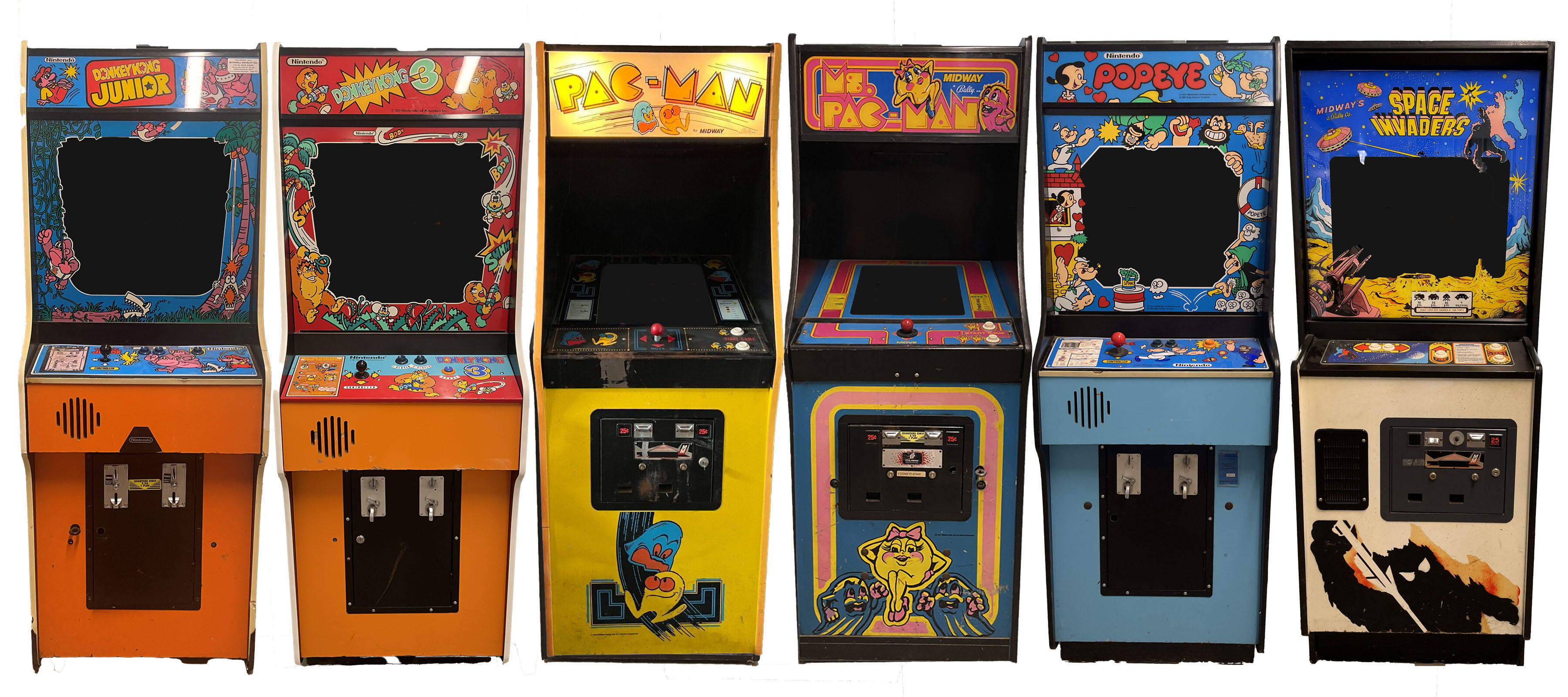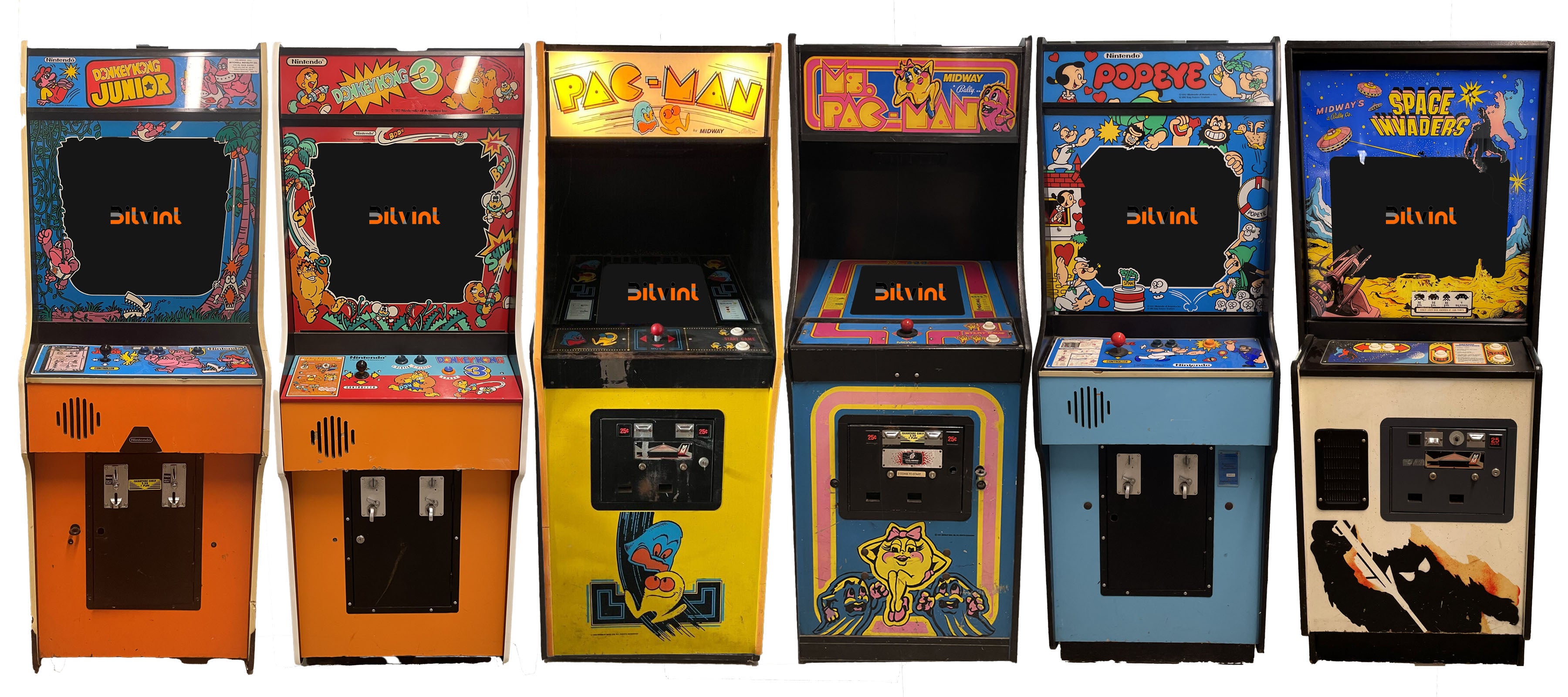Introduction: A Look at the Evolution of Arcades
Arcades have been an iconic part of gaming culture for decades, providing an immersive experience that has evolved with time. From the classic arcade halls of the 1980s to the rise of virtual reality arcades today, the types of arcades have shifted, each offering unique gaming experiences. Understanding the different types of arcades can help you appreciate their rich history, technological advancements, and how they've shaped the way we play games today.

1. Traditional Arcades: The Golden Age of Gaming
The classic arcade is where it all began. These arcades, which boomed in the late 1970s and 1980s, were home to some of the most iconic coin-operated games ever created. The advent of Pong, Space Invaders, Pac-Man, and Donkey Kong revolutionized the gaming industry, turning arcade machines into cultural phenomena.
Key Features of Traditional Arcades:
- Upright Arcade Cabinets: Classic, stand-up cabinets where players would insert coins to play. These machines housed the arcade games that defined an era.
- High Score Competitions: Players competed not just for fun but also for the high score—a badge of honor in every arcade.
- Social Spaces: Arcades were more than just places to play games—they were community hubs, bringing people together for friendly competition or cooperation.

2. Barcades: Combining Gaming with Social Fun
The rise of barcades in the late 2000s marked a shift in arcade culture, combining retro arcade games with bars or pubs. These venues cater to both nostalgic gamers and young crowds looking for an alternative social experience.
Key Features of Barcades:
- Retro Games and Craft Beers: Barcades typically offer a mix of vintage arcade machines and modern gaming consoles, along with a selection of craft beers, cocktails, and snacks.
- All-Ages or 21+ Venues: Some barcades are open to all ages, while others are 21+ only, creating a fun space for adults to unwind while reliving the golden days of arcade gaming.
- Modern Twist: Many barcades blend classic arcade games with pinball machines, offering players a comprehensive gaming experience.

3. Virtual Reality (VR) Arcades: The Future of Immersive Play
As gaming technology has advanced, so too have the arcades. Enter the VR arcade—an entirely new form of arcade gaming where players don VR headsets and become immersed in fully interactive virtual worlds. These arcades provide an incredibly immersive experience, allowing players to interact with their environment in ways that were once thought impossible.
Key Features of VR Arcades:
- Immersive Environments: Players step into fully virtual worlds, experiencing everything from action-packed adventures to puzzle-solving in a 360-degree environment.
- Multi-Player and Co-op Gaming: VR arcades often offer co-op multiplayer games, allowing players to team up in virtual space to complete missions or battle enemies together.
- Advanced Equipment: High-quality VR headsets, motion-tracking technology, and haptic feedback systems provide a truly next-level experience.

4. Retro Arcades: Keeping the Nostalgia Alive
Retro arcades are a revival of the classic arcade scene, offering a dedicated space for nostalgic players who want to relive the glory days of 1980s arcade gaming. These arcades typically feature a mix of original machines, reproductions, and even emulators that replicate the classic gameplay of arcade hits like Pac-Man, Galaga, and Asteroids.
Key Features of Retro Arcades:
- Original and Reproduction Cabinets: Retro arcades may feature original coin-operated machines or modern replicas of classic titles, ensuring players experience authentic gameplay.
- Arcade Culture: These spaces often focus on maintaining the community feel of traditional arcades, with high-score leaderboards and tournaments.
- Family-Friendly: Retro arcades tend to cater to families and individuals of all ages who enjoy revisiting the games they grew up with.

5. Mobile Arcades: Bringing the Games to You
With the rise of mobile technology, arcade games have expanded beyond traditional venues. Mobile arcades are pop-up events or businesses that bring a collection of arcade games to festivals, parties, and events. These portable arcades allow people to experience the fun of gaming wherever they are.
Key Features of Mobile Arcades:
- Portable Gaming: Games are often set up in custom trailers or tents, providing a fun and convenient way to play at different locations.
- Versatility: Mobile arcades can host private events or cater to large public crowds at festivals or conventions.
- Variety of Games: Mobile arcades offer a mix of pinball, retro games, and modern cabinets, making them a hit at gaming conventions or corporate events.

Why Do Arcades Matter Today?
While home consoles and mobile gaming have significantly shifted the landscape of gaming, arcades remain a beloved part of gaming culture. They provide a social atmosphere, a unique gaming experience, and a nostalgic escape that modern gaming sometimes can’t replicate. Arcades are more than just games—they are places where community and competition come alive.
Whether you are enjoying classic titles at a barcade, exploring the virtual worlds in a VR arcade, or revisiting the golden age of arcade machines, arcades offer something for every type of gamer.
Conclusion: The Enduring Legacy of Arcades
The various types of arcades—from traditional halls to the cutting-edge VR experiences—highlight the evolution of gaming. The unique appeal of arcades lies in their ability to bring people together in ways that home gaming systems often can’t match. As technology advances, arcades continue to innovate, proving that the thrill of playing in a social, immersive environment will always have a place in the gaming world.
Whether you’re a fan of the retro era or excited about the future of VR, the arcade will always be a pivotal part of gaming culture.

